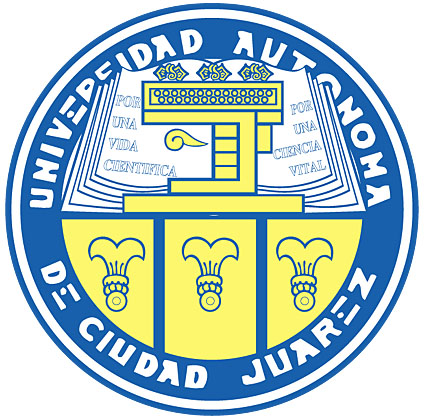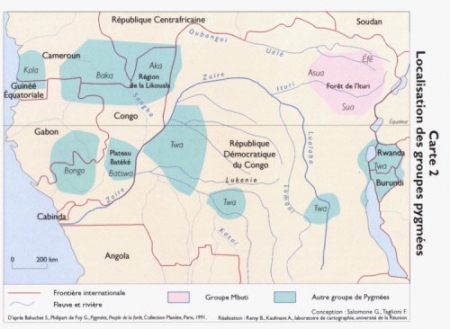howard wang professor li intro to east asian civilizations – china v2359 23 april 2004 reordering the mind: the transition to neo-c
Howard Wang
Professor Li
Intro to East Asian Civilizations – China V2359
23 April 2004
Reordering the Mind: The Transition to Neo-Confucianism
A great era in East Asian history came to a close with the decline of
the Tang dynasty in the ninth century. The end of the Tang, though
nominally differentiated, was, in fact, only a portion of a much
larger change in the East Asian realm. The fall of the dynasty brought
with it the end of China’s expansionistic drive and led to the
deterioration of Buddhism as the compelling ideological force of the
age. With China’s political transition to the Song dynasty, the focus
of the nation shifted from expansionism to internal economic, social,
and cultural development. In order to address the concerns of the
period, Neo-Confucianism came as an answer to Buddhism. From the
eleventh century to the nineteenth century, Neo-Confucianism would
grow and develop into an ideology that would not only shape the face
of China’s social, economic, and political climate, but as a principle
that unified Chinese pre-modern and modern morality under the same
moral precepts.
Buddhism survived during the Tang dynasty due to its expansionistic
nature and its accessibility to the masses. However as China evolved
into a state more concerned with internal development,
Neo-Confucianism came as a “new” concept which provided what the new
era needed. The success of Neo-Confucianism can be attributed to
various factors. For one thing, Neo-Confucianism addressed both social
and political concerns; whereas Buddhism’s inherent adaptability was
rooted in its detachment from such secular affairs. Therefore, it
could only be relied upon for personal spiritual release from
suffering, and not as a solution to social and political matters.
The emergence and subsequent prominence of a new class of literati in
the Song characterized the focus of the state on a civil
administration rather than a military based government. With the Song
focused on establishing a civil rule, the need for increased
scholarship among the masses became apparent. The technological advent
of the printing press facilitated the spread of secular education and
scholarship. As a result of this now widely available recorded
knowledge, academies of secular learning sprung up throughout China
and replaced the Buddhist temples of the preceding age as the
intellectual hubs of the nation. Furthermore, the Song reformation of
the Civil Service Examinations further underscored the overwhelming
demand for schooling and an organized system of education. Efforts to
satisfy this overwhelming demand for education were what brought about
the development of Neo-Confucianism.
The groundwork for Neo-Confucianism was laid out during the opening
years of the Song by a man named Hu Yuan. Hu fashioned a venerated
curriculum of study during the tenth century which focused on both
practical learning and the study of the Confucian classics. His
emphasis on practical learning and technical specialization was a
testament to his belief in the pragmatic application of knowledge. In
the same manner, Hu emphasized the practicality and functionality of
Confucian teachings as timeless principles that are enduringly
applicable in one’s own time. Hu’s emphasis on the “structure,
function, and literary expression” characteristic of Confucianism
belied the Buddhist principles of ethereality and incommunicability of
the truth. This new system of learning developed by Hu came to be
described as “practical” learning, as opposed to the “empty” learning
of Buddhism and even that of Classical Confucianism, which was
criticized based on its focus on impractical, encyclopedic knowledge
and its lack of any moral purpose or application.
A key difference between Classical Confucianism and Neo-Confucianism
was the addition of the metaphysical facet in the new philosophy that
developed alongside the classical focus on the social and moral self.
This spiritual component added to its versatility and further
strengthened the argument put forth by subscribers of the ideology
against competing ideologies, most notably that of Buddhism. This new
metaphysics attempted to structure a philosophy to explain human
nature in a way consistent with the teachings of Confucius and
Mencius, all while meeting the challenge from other metaphysical
schools of thought. The Song Neo-Confucians faced two essential
concerns in their formation of this new metaphysical philosophy.
Firstly, they needed to affirm the Confucian conception of human
nature as essentially good in a cosmological manner. Secondly, it was
essential that they address the need for the cultivation of a moral
and good self by disavowing established Buddhist doctrine regarding
the insignificance and emptiness of self. The solution they developed
in order to address these concerns was based on the conception of an
interrelation and dynamic correlation between the concepts of
principle (li) and material-force (qi), where principle corresponded
with the abstract element of human nature, while material-force was
described as the tangible, material manifestation of principle. This
new doctrine of human nature brought about the characterization of the
Neo-Confucian sage as, not only a morally just person, but as a
spiritual individual concerned with both the social affairs of the
world and the spiritual integrity of the mind.
Yet another defining distinction between Neo-Confucianism and
Classical Confucianism was the way each philosophy portrayed the role
of the Confucian sage. Classical Confucianism focused on the morality
and sagehood of the leader or king in the political and social realms
of society. However, a fundamental component of Neo-Confucianism was
its universality. In this respect, Neo-Confucians promoted the idea of
sagehood being available and attainable by everyone though the
employment of a standard neoclassical curriculum of schooling
accessible by all.
The way in which to attain this sagehood had been discussed and
illustrated by works produced by numerous Neo-Confucian scholars,
including Zhou Dunyi, the Cheng brothers, and Zhang Zai. Of these
scholars, the most important contributor to Neo-Confucianism is a man
named Zhu Xi, who is recognized as the synthesizer of the
Neo-Confucianism that came to be accepted in China, and eventually
throughout East Asia, from the twelfth century to the nineteenth
century. Zhu Xi took the concepts of Neo-Confucianism presented by his
predecessors and elaborated on them in such a way as to elucidate and
further delve into the nature of these principles. His studies on and
interpretations of these separate works came together to form one
system of thought in which Neo-Confucianism would become based upon.
Specifically, Zhu Xi’s philosophy was based extensively on the
doctrine of principle (presented by Cheng Yi), which serves as a
unifying concept in his philosophy. Zhu Xi’s most lofty contribution
came in the form of his compilation of the Four Books. His Four Books
consisted of the Analects, the Mencius, the Great Learning and the
Mean. Although the Analects and the Mencius were already important
works in any Confucian curriculum of education, the Great Learning and
the Mean were not focused upon until Zhu Xi’s inclusion of these works
in his anthology gave them prominence in Neo-Confucian studies. Zhu Xi
spent much of his life focused on writing commentaries for these four
works, including prefaces for the Great Learning and the Mean. It’s
important to note that his writings were not excessively technical or
philosophical to the point where only the learned elite could
comprehend their meaning. His purpose in composing such writings was
to make sure that the didactic content contained in his work and
compilation would be able to reach the widest possible audience. Zhu
Xi’s emphasis on the importance of education is clearly apparent in
his writings, most appreciably in his preface to the Great Learning.
In his preface, he stressed the importance of a system of universal
education where learning could be brought to all. He presented a very
well-defined process in which an individual could attain the
Neo-Confucian ideal of enlightenment. This process consisted of three
guiding principles, which discussed the importance of recognizing,
cultivating, and harnessing the innate goodness of one’s self. From
these three principles, Zhu Xi goes on to present his Eight Steps,
which consecutively and systematically lays out a procedure of
self-cultivation for the noble person. Of equal importance to his
preface to the Great Learning was Zhu Xi’s preface to the Mean.
Wherein he discusses the human mind and the mind of the Way and
further elaborates on the correlation between the Message of the Mind
(xinfa) and the Way.
To his credit, Zhu Xi’s Four Books, with his prefaces and
commentaries, came to be regarded as a “core curriculum” of sorts in
the Neo-Confucian schools of learning. Due to the universal nature of
his teachings, his ideas and practices easily spread with ease. The
applicability of his teachings on every level of education and the
basic, systematic nature of his texts, along with the availability of
printing, supported the need for a universal education as recognized
by Song reformers.
The pertinence of Neo-Confucian teachings was not recognized merely in
the Chinese sphere. Neo-Confucian ideals were quickly accepted by the
rest of East Asia due to their adaptability and universal
applicability, as opposed to Classical Confucianism, which usually
focused on issues that were only of concern to the Chinese mind. The
universality of Neo-Confucianism not only contributed greatly to the
rapid spread across East Asia, but, more importantly, it allowed each
country to apply the principles of the philosophy in such a way as to
augment their cultural identities as opposed to sacrificing that
identity. Buddhism’s universality can be attributed to its parallel,
but distinct, development alongside a culture. Neo-Confucianism, on
the other hand, was almost completely integrated into the social,
political, and spiritual facets of a culture, while it still allowed
each country to maintain its specificity and cultural integrity.
It is to the credit of Neo-Confucianism’s solid doctrine that it was
thoroughly subscribed to by people in all walks of life while still
maintaining its ideological integrity from the Song up until the time
of the Ming. However, with political and social modernization,
ideological innovation is bound to follow. During the reign of the
Ming dynasty in the sixteenth century, Wang Yang-Ming suggested an
alternative interpretation of the Learning of the Mind and Heart as
established by Zhu Xi. Wang’s new methodology interpreted the Learning
of the Mind and Heart in a more intuitive and innate manner as opposed
to Zhu Xi’s interpretation, which focused on the perception of the
existentiality of things. Wang’s perception of the innate integrity of
one’s own mind allowed his new doctrine to be more accessible than
even that of Zhu Xi’s teachings. Wang emphasized that the method to
reach sagehood lied not in meeting standards set by the others, but by
knowing one’s own mind and recognizing the innate knowledge within.
Therefore, an individual need not be hindered by the inaccessibility
of knowledge, since sagehood, according to Wang, is derived from the
mind of the individual. This revised ideology became widely popular,
but also faced staunch disapproval from traditional Neo-Confucian
followers of Zhu Xi’s doctrine. However, it should be noted that
Wang’s doctrine was not considered to be a self-sustaining ideology in
its own right, but more of an extension, or appending of Zhu Xi’s
philosophy. In this manner, Wang’s philosophy became accepted as the
new School of the Mind and Heart as Zhu Xi’s philosophy remained as
the School of Principle by the majority of Neo-Confucians up until the
nineteenth century.
Although Neo-Confucianism underwent a revision in the Ming dynasty,
the founding principles and unifying tenets of the philosophy still
held true in its basic principles. Clearly, Neo-Confucianism impacted
greatly on Chinese Civilization, as each ruling dynasty following the
Song until the Mind officially accepted some form of the philosophy.
The Chinese accepted the ideology as the defining doctrine in their
political philosophy and social structure, for instance, through
circumstantial instillation of the philosophy through the Civil
Service Examinations. Although the degree of instillation in the
political and social realms of each dynastic institution differed,
Neo-Confucianism was an undoubtedly unifying force in Chinese history.
The moral and practical ideals embraced by Neo-Confucianism were one
and the same among these dynasties despite relatively distinctive
lines of cultural development by those such as the Mongols and
Manchus, which is, perhaps, a testament to the credibility of
Neo-Confucianism as a political and spiritual ideology. The
universally applicable tenets of moral responsibility and intellectual
cultivation of the self were appropriate and acknowledged by nearly
all of pre-modern China from the Song reformers to the Mongol invaders
and served as the uniting principle of the age.
Works Cited
de Bary, Wm. Theodore, and Irene Bloom, eds. Sources of Chinese
Tradition. 2nd ed., Vol. I. New York: Columbia UP, 1999.
de Bary, Wm. Theodore. East Asian Civilizations. Cambridge: Harvard
UP, 1988.
Schirokauer, Conrad. A Brief History of Chinese and Japanese
Civilization. 2nd ed. New York: Wadsworth Thomson Learning, 1989.
 YAPI DENETIMI UYGULAMA USUL VE ESASLARI YÖNETMELIĞI (TASLAĞI) BİRİNCİ
YAPI DENETIMI UYGULAMA USUL VE ESASLARI YÖNETMELIĞI (TASLAĞI) BİRİNCİ formularz_danych_jednostki
formularz_danych_jednostki 5 WIPO PROFILE DR T HOEREN ARBITRATION AND
5 WIPO PROFILE DR T HOEREN ARBITRATION AND ENRICO MANFUCCI 2° ANNO SSIS SIENA – AA
ENRICO MANFUCCI 2° ANNO SSIS SIENA – AA  PROSPECTO INFORMACIÓN PARA EL USUARIO MOVICOL SABOR NARANJA SOLUCIÓNCONCENTRADO
PROSPECTO INFORMACIÓN PARA EL USUARIO MOVICOL SABOR NARANJA SOLUCIÓNCONCENTRADO STATUTORY INSTRUMENTS SI NO 414 OF 2002 FISHERIES ACTS
STATUTORY INSTRUMENTS SI NO 414 OF 2002 FISHERIES ACTS CONTACTO JUDY IANNACCONE 11 DE FEBRERO DEL 2008 DIRECTORA
CONTACTO JUDY IANNACCONE 11 DE FEBRERO DEL 2008 DIRECTORA UNIVERSIDAD AUTÓNOMA DE CIUDAD JUÁREZ SECRETARÍA ACADÉMICA CENTRO DE
UNIVERSIDAD AUTÓNOMA DE CIUDAD JUÁREZ SECRETARÍA ACADÉMICA CENTRO DE R IPP442 EPUBLIQUE CENTRAFRICAINE UNITÉDIGNITÉTRAVAIL MINISTERE DES AFFAIRES SOCIALES
R IPP442 EPUBLIQUE CENTRAFRICAINE UNITÉDIGNITÉTRAVAIL MINISTERE DES AFFAIRES SOCIALES O ČINNOSTI ŠKOLY VÝROČNÍ ZPRÁVA O ČINNOSTI ŠKOLY
O ČINNOSTI ŠKOLY VÝROČNÍ ZPRÁVA O ČINNOSTI ŠKOLY  COMUNICADO DE PRENSA PEUGEOTES PEUGEOT PRESENTA SU NUEVA COLECCIÓN
COMUNICADO DE PRENSA PEUGEOTES PEUGEOT PRESENTA SU NUEVA COLECCIÓN